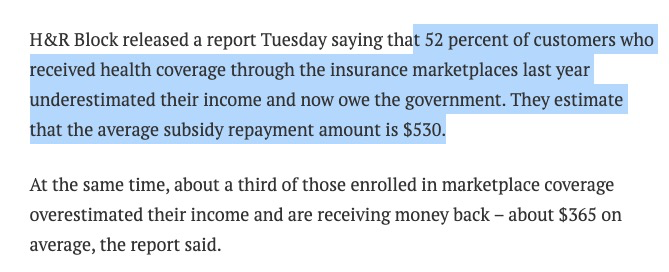
This is PRECISELY why extending the 8.5% cap on health insurance premiums all the way up the income ladder makes sense even if it means rare cases of fairly well-off people receiving nominal subsidies. 

Whoops..here’s where this came from:
https://twitter.com/standorn/status/1371298354123132931
For instance, on average nationally, a 64-yr old couple earning $270,000/yr would receive...$7 per month. Of course the vast majority of those folks have employer coverage to begin with. Plus, they’re already paying more than that in surtaxes to help pay for the subsidies anyway. 

(Part of the ACA funding comes from small surtaxes on income over $200K if you’re single or $250K for married couples).
• • •
Missing some Tweet in this thread? You can try to
force a refresh






